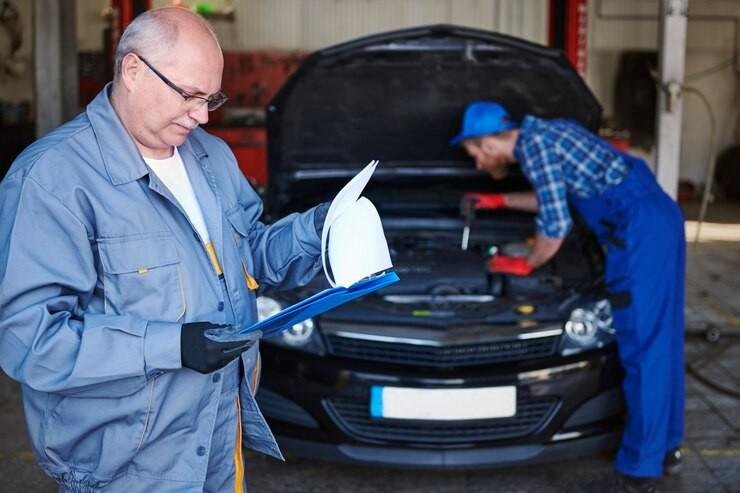Auto body repair is an essential service that restores vehicles to their original condition after accidents, collisions, or other damages. This field encompasses a range of services, from dent removal to full-body repainting and structural realignment. Whether you are a car owner looking for repairs or someone interested in the industry, understanding auto body repair can help you make informed decisions.
Understanding Auto Body Repair
Auto body repair refers to fixing and restoring a vehicle’s exterior after it has suffered damage. Unlike mechanical repairs, which focus on the engine, transmission, and other internal components, auto body repair primarily deals with the car’s frame, paint, and overall appearance. The goal is to return the vehicle to its pre-damage condition, ensuring it is both aesthetically pleasing and safe to drive.
Common Types of Auto Body Damage
Vehicles can suffer from various types of damage, which require different repair techniques. Some common types of auto body damage include:
- Dents and Dings
These are minor indentations that can occur from hail, small collisions, or objects hitting the car. Paintless dent repair (PDR) is often used to fix such damage without requiring repainting.
- Scratches and Paint Damage
Scratches can result from contact with other objects, poor washing techniques, or minor accidents. Depending on the severity, they may require touch-up paint, polishing, or complete repainting.
- Frame Damage
Major accidents can bend or twist a car’s frame, affecting its structural integrity. Auto body technicians use specialized tools, such as frame straighteners, to restore the vehicle’s original shape.
- Bumper Damage
Bumpers are designed to absorb impact, but they can crack, dent, or detach in an accident. Some cases require simple repairs, while others necessitate full bumper replacements.
- Rust and Corrosion
Exposure to moisture and road salt can cause rust, which weakens metal parts. Rust repair involves removing corroded sections, applying rust inhibitors, and repainting the area to prevent further damage.
The Auto Body Repair Process
Auto body repair follows a structured process to ensure quality results. While each repair job may differ, the general steps include:
- Assessment and Estimation
The repair shop inspects the damage and provides an estimate, outlining the necessary repairs and associated costs. Many shops use computerized systems for accurate assessments.
- Disassembly
If the damage is extensive, technicians may need to disassemble parts of the vehicle to access hidden damages. This step is crucial for frame repairs and repainting.
- Body Repair and Replacement
Technicians repair dents, replace damaged panels, and straighten the frame. Advanced tools such as hydraulic presses and welding equipment are often used for structural repairs.
- Surface Preparation and Painting
Once repairs are complete, the vehicle undergoes sanding, priming, and painting. High-quality paint matching ensures a seamless blend with the original color. A clear coat is applied for protection and shine.
- Reassembly and Quality Inspection
After painting, the vehicle is reassembled, and a thorough quality inspection is conducted to ensure proper alignment and a flawless finish. Final polishing and detailing enhance the car’s appearance.
Choosing an Auto Body Repair Shop
Selecting the right auto body repair shop is crucial for getting quality service. Consider the following factors:
- Certification and Experience – Look for shops with certified technicians (such as ASE or I-CAR certification) and extensive experience in the industry.
- Reputation and Reviews – Online reviews and customer testimonials can provide insight into a shop’s reliability and quality of work.
- Warranty on Repairs – A reputable shop will offer a warranty on its services, ensuring that repairs are durable and meet industry standards.
- Use of Advanced Technology – Modern repair shops use computerized paint-matching systems and frame straightening machines for precise repairs.
Preventing Auto Body Damage
While accidents are sometimes unavoidable, taking preventive measures can reduce the likelihood of needing auto body repairs. Here are some tips:
- Drive Cautiously – Follow traffic rules and maintain a safe distance from other vehicles to avoid collisions.
- Park in Safe Areas – Avoid parking under trees, near construction sites, or in high-traffic areas where dings and scratches are common.
- Wash and Wax Regularly – Keeping your car clean and applying wax can protect the paint from dirt, sun damage, and rust.
- Use Protective Covers – Car covers can shield your vehicle from environmental hazards such as hail and bird droppings.
Final Words
Auto body repair is essential for maintaining a vehicle’s safety, functionality, and appearance. Whether dealing with minor dents or major structural damage, professional auto body technicians play a critical role in restoring cars to their pre-damage condition. By understanding the repair process and taking preventive measures, car owners can keep their vehicles looking great and running safely for years to come.



